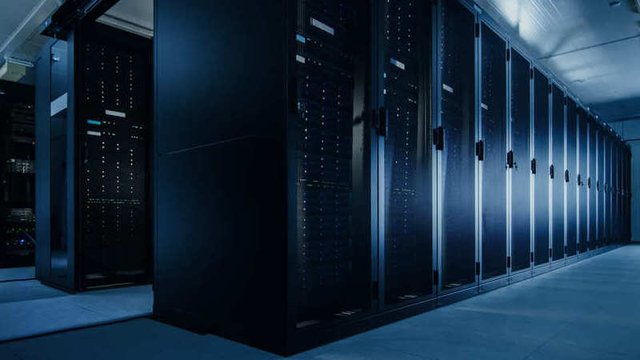

Data has become one of the most valuable assets for any modern organisation. Companies today rely on data not only to make informed decisions but also to maintain competitiveness and security.
To store, manage, and process this information efficiently, they depend on data centres — essential infrastructures that guarantee availability, protection, and performance in the digital world.
If you’re passionate about technology, data, and artificial intelligence, the Master’s in Big Data Analytics at Universidad Europea will provide you with the tools to analyse large volumes of information and apply advanced analytical methods to real business challenges.
What is a data centre?
A data centre (also known as a data processing centre or DPC) is a physical facility where massive amounts of information are stored, processed, and managed. Its purpose is to ensure that data remains accessible, secure, and operational always — even in the event of power failures or cyberattacks.
These centres are vital for sectors such as banking, healthcare, telecommunications, e-commerce, and any organisation that depends on digital systems. The information stored in a data centre is far too extensive to be processed manually, which is why experts in big data and data engineering play such an important role in its management.
Key components of a data centre
A data centre’s performance depends on a combination of advanced hardware, secure infrastructure, and energy-efficient systems. Its main components include:
- Servers: High-performance computers that process and store data.
- Storage systems: Hard drives, SSDs, and cloud solutions that retain digital information.
- Communication networks: Cabling and network devices that ensure connectivity and data transfer.
- Cooling systems: Air conditioning and ventilation that prevent overheating.
- Uninterruptible Power Supply (UPS): Backup systems that keep operations running during outages.
- Security systems: Firewalls, surveillance cameras, and restricted access to protect both physical and digital assets.
Together, these components create an environment where information can be accessed quickly and safely, 24 hours a day.
Types of data centres
Data centres come in different forms depending on their size, purpose, and ownership. The most common types are:
- Enterprise Data Centres: Owned and operated by organisations to manage internal data and applications.
- Cloud Data Centres: Managed by external providers such as Amazon Web Services (AWS), Microsoft Azure, or Google Cloud, offering remote storage and computing power.
- Colocation Data Centres: Facilities where companies rent space to host their servers, sharing resources with other clients.
- Modular Data Centres: Scalable structures that can be expanded or relocated easily to meet growing data demands.
What is a data centre used for?
The main goal of a data centre is to support digital operations and services across industries. Its core functions include:
- Secure data storage: Protecting information from loss, theft, or corruption.
- High-speed data processing: Handling large-scale calculations and real-time analytics.
- Guaranteed availability: Ensuring that systems remain operational with minimal downtime.
- Support for digital services: Powering applications such as social networks, streaming platforms, and online shops.
In essence, data centres are the invisible backbone of today’s connected world, enabling everything from financial transactions to cloud computing.
Main features of data centres
While each organisation tailors its infrastructure to specific needs, most modern data centres share these characteristics:
- Management of massive data volumes: Essential for companies that rely on big data and real-time analytics.
- Security and disaster recovery: Built-in backup systems and recovery plans for emergencies.
- Immediate access to information: Reduces downtime and improves efficiency.
- Integration with analytics tools: Compatibility with platforms like Power BI or machine learning software for advanced data visualisation and interpretation.
Many of these processes are enhanced by artificial intelligence and automation technologies, which improve energy efficiency and data accuracy.
Conclusion: why are data centres so important today?
Data centres are at the heart of the digital economy, ensuring that the world’s information remains secure, accessible, and analysable. They make possible the functioning of essential services — from online banking to social media — and open the door to exciting career opportunities in technology and data science.
In summary:
- A data centre stores, manages, and protects digital information.
- It’s vital for business continuity and cybersecurity.
- There are different types, from enterprise to cloud and modular centres.
- Data centres underpin the entire digital infrastructure of modern life.
If you want to build a career in this ever-evolving sector, consider the Master’s in Big Data Analytics or any of the programmes within the area of masters in business and technology at Universidad Europea and you will be prepared to master data technologies and lead the digital transformation of the future.